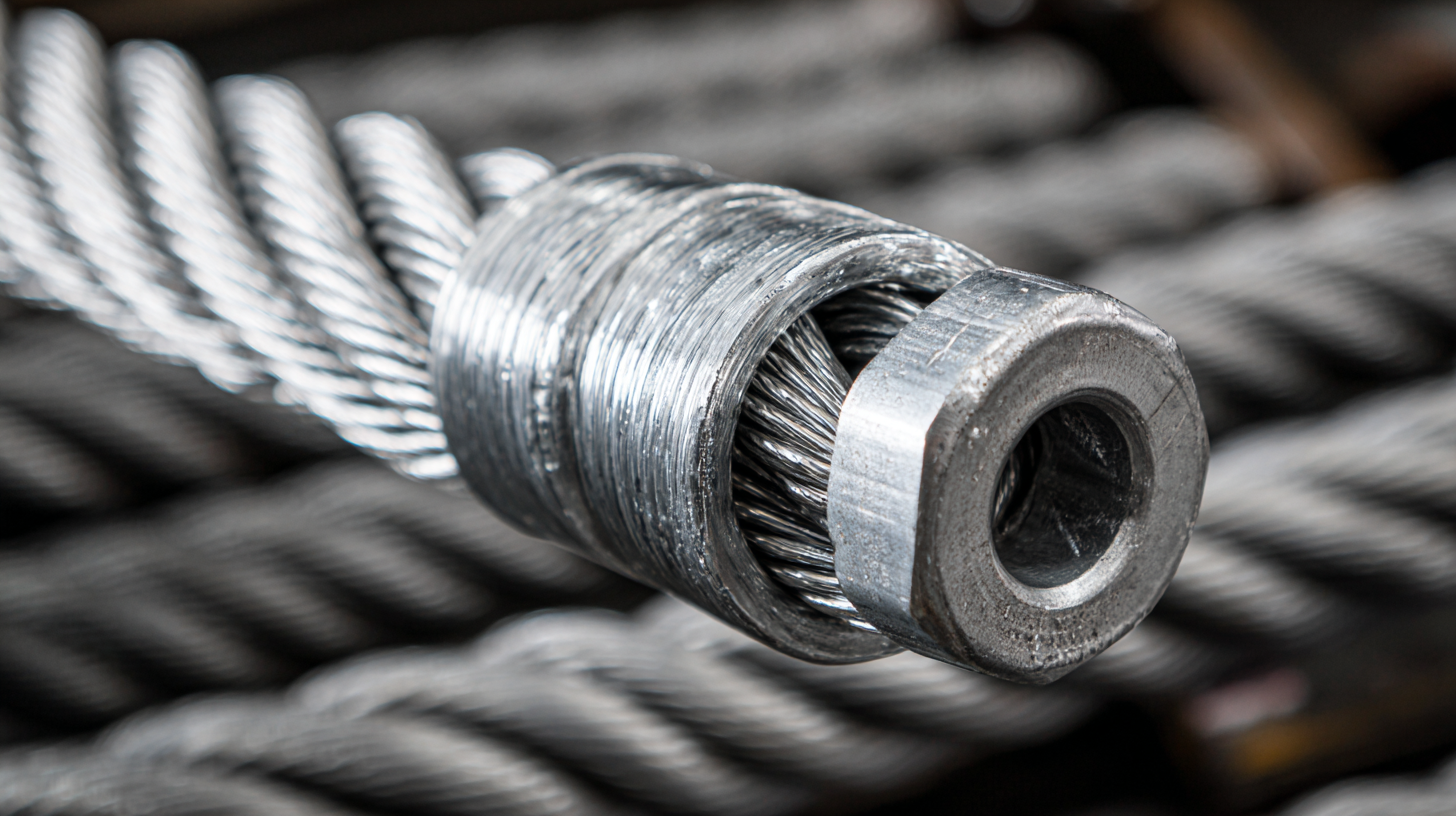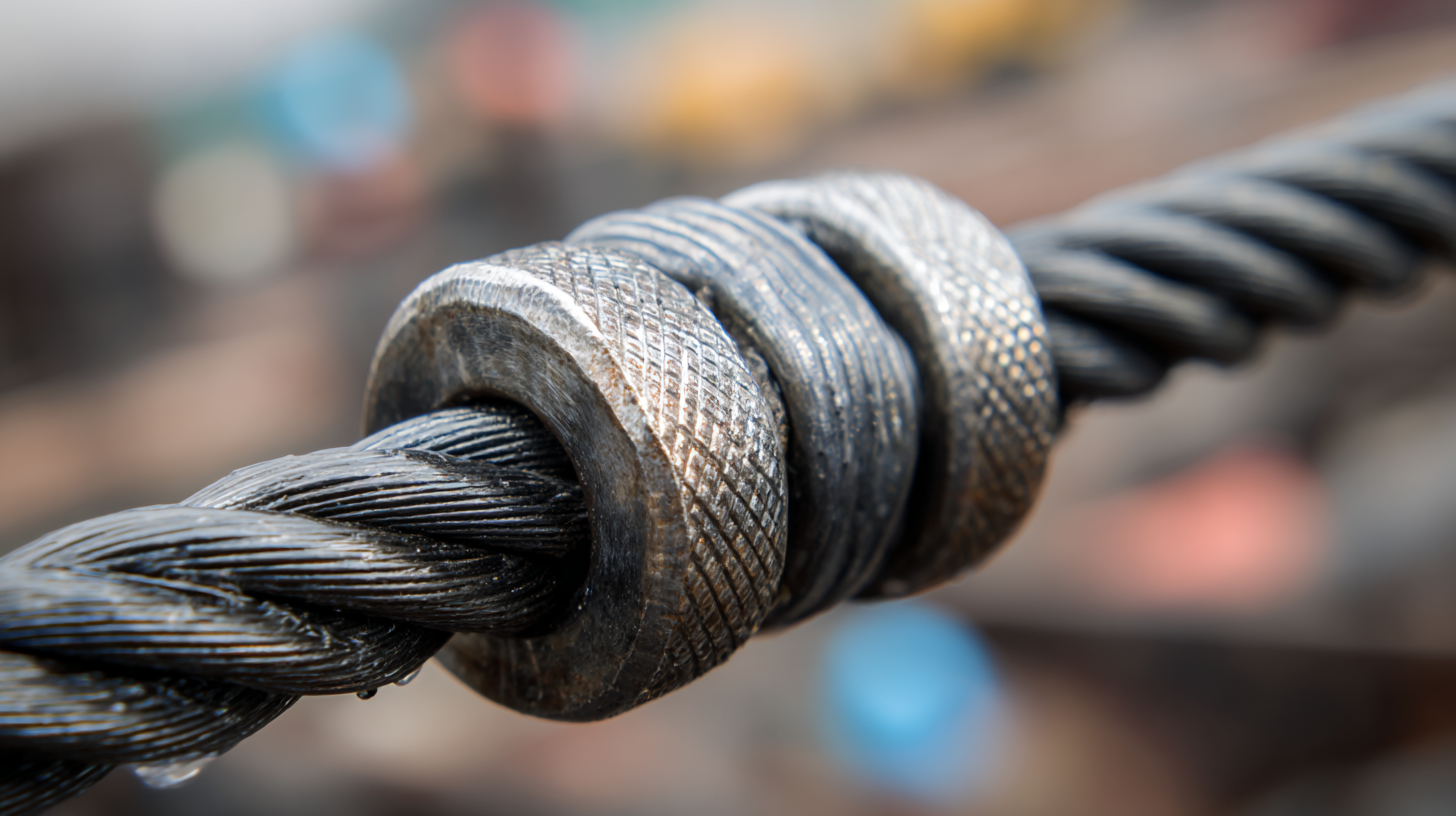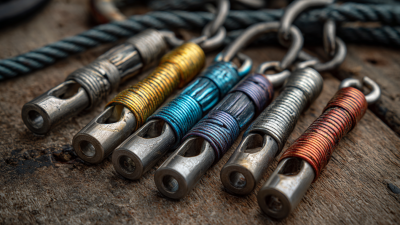In the realm of rigging and lifting, the effective use of Wire Rope Turnbuckles plays a crucial role in achieving optimal tensioning solutions. According to a recent industry report by MarketsandMarkets, the global wire rope market is projected to reach USD 3.9 billion by 2025, underscoring the importance of precision and reliability in applications that require significant load handling.

Wire Rope Turnbuckles are essential components that facilitate the adjustment of tension in wire ropes, ensuring safety and stability in construction, shipping, and various industrial applications. With their ability to accommodate tensile stress while providing precise adjustments, these devices not only enhance safety but also improve the efficiency of operations.
Understanding how to properly utilize Wire Rope Turnbuckles is critical for achieving the desired tension, thereby reducing the risk of failures and increasing the longevity of the equipment deployed in challenging environments.
Wire rope turnbuckles are essential components in rigging and tensioning applications, providing a reliable means to adjust the tension of cables, wires, and ropes. Understanding their functionality begins with recognizing that turnbuckles come in different types, each designed to accommodate various loading conditions and environments. According to industry reports, the global demand for wire rope products is projected to grow at a CAGR of 5.2% from 2023 to 2028, driven by their extensive use in construction, transportation, and marine industries.
To effectively utilize wire rope turnbuckles, it is crucial to select the right type based on the required tension strength and installation conditions. For instance, closed body turnbuckles are often preferred in situations where space constraints prevent the use of open body designs. Proper installation and periodic maintenance are also vital for ensuring optimal performance. According to a recent survey conducted by the Rigging Industry Association, nearly 40% of rigging failures are attributed to improper tensioning methods. This underscores the importance of expertise in working with turnbuckles to maintain safety and efficiency in various applications.
When selecting the right type of wire rope turnbuckle for your needs, it’s essential to consider several factors that match your application’s requirements. According to the Wire Rope Technical Board, the correct turnbuckle can enhance tension and support efficiency by up to 30%, particularly in applications such as construction or marine settings where load stability is crucial. Key aspects include the size and material of the turnbuckle, as stainless steel options provide increased resistance to corrosion, making them ideal for harsh environments.

Additionally, the design of turnbuckles plays a significant role in their effectiveness. For instance, open body turnbuckles offer easy adjustments while closed body types ensure a tighter, more secure fit. Reports from the National Association of Trailer Manufacturers indicate that the choice between these designs can impact the overall safety and functionality of the tensioning system, especially under high-stress conditions. By carefully evaluating the specific needs of your project and the turnbuckle options available, you can achieve optimal performance and reliability in your tensioning solutions.
When it comes to installing wire rope turnbuckles, following a systematic approach is essential for achieving optimal tensioning. Start by selecting the appropriate turnbuckle that suits the specific application. Ensure that the dimensions and load ratings align with the requirements of your project. Once you have the right turnbuckle, prepare the wire rope by cutting it to the desired length and terminating the ends properly to prevent fraying.

Next, attach the turnbuckle to the wire rope. Begin by inserting one end of the wire rope through the eye of the turnbuckle and securing it with a clamp or fitting. Repeat this process for the other end of the wire rope, ensuring that both sides are securely fastened.
After the turnbuckle is in place, gradually tighten it by rotating the central body to achieve the desired tension. It is crucial to monitor the tension regularly and adjust as necessary, particularly in applications subject to fluctuating loads or environmental changes. Remember that proper installation not only enhances performance but also extends the lifespan of your wire rope system.
When it comes to using wire rope turnbuckles, maintenance is key to ensuring longevity and optimal performance. Regular inspections are essential; look for signs of wear, rust, or any deformities in the turnbuckle and wire rope assemblies. It’s advisable to check the turnbuckle's threads and adjusting hardware frequently, as corrosion can hamper functionality and lead to premature failure.
Tips for maintaining turnbuckles include keeping them clean and lubricated. Use a mild detergent to remove dirt and debris, and apply a suitable lubricant to the threads and moving parts to prevent friction and wear. Additionally, ensure that the turnbuckles are properly tensioned according to the manufacturer's guidelines. Over-tightening can lead to structural damage, while under-tightening may not provide the necessary support.
It’s also prudent to store turnbuckles in a dry, shaded environment when not in use to protect them from harsh weather conditions. Consider using covers if the turnbuckles are installed outdoors, as this will help shield them from the elements and extend their operational lifespan. By prioritizing these maintenance practices, you can enhance the performance and durability of your turnbuckles, ensuring reliable tensioning solutions for your projects.
| Aspect | Details |
|---|---|
| Material | Stainless Steel (Corrosion-resistant) |
| Size Range | 1/4 inch to 1 inch (Diameter) |
| Load Capacity | Up to 10,000 lbs (Depending on size) |
| Common Applications | Construction, Rigging, Tensioning cables |
| Maintenance Tip | Regularly inspect for wear and corrosion |
| Adjustment Method | Use a wrench to tighten or loosen |
| Safety Measure | Use safety lanyards for fall protection |
| Lifespan | 5-10 years (With proper care) |
When using wire rope turnbuckles for tensioning, it's essential to avoid common mistakes that can lead to safety hazards and operational inefficiencies. One prevalent error is failing to properly gauge the tension required for your specific application. According to industry reports, over-tensioning can not only lead to component failure but also pose significant safety risks, compromising the integrity of the entire system. Always refer to the manufacturer's specifications and use a tension gauge to achieve optimal results.
Another common mistake is neglecting regular inspections of the tensioning system. Wear and tear or corrosion, particularly in stainless steel components, can significantly affect performance. A study from the International Association of Tensioning Professionals indicates that preventative maintenance can increase the lifespan of tensioning systems by up to 40%. Ensuring that turnbuckles are adequately lubricated and free from debris will help maintain their functionality.
**Tips:** Always ensure your wire rope turnbuckles are compatible with the specific cable and hardware you are using. Investing in high-quality components, such as JIS B1168 eye bolts, can provide added strength and reliability. Lastly, document your tensioning procedures and adjustments to track performance and identify any recurring issues over time.






